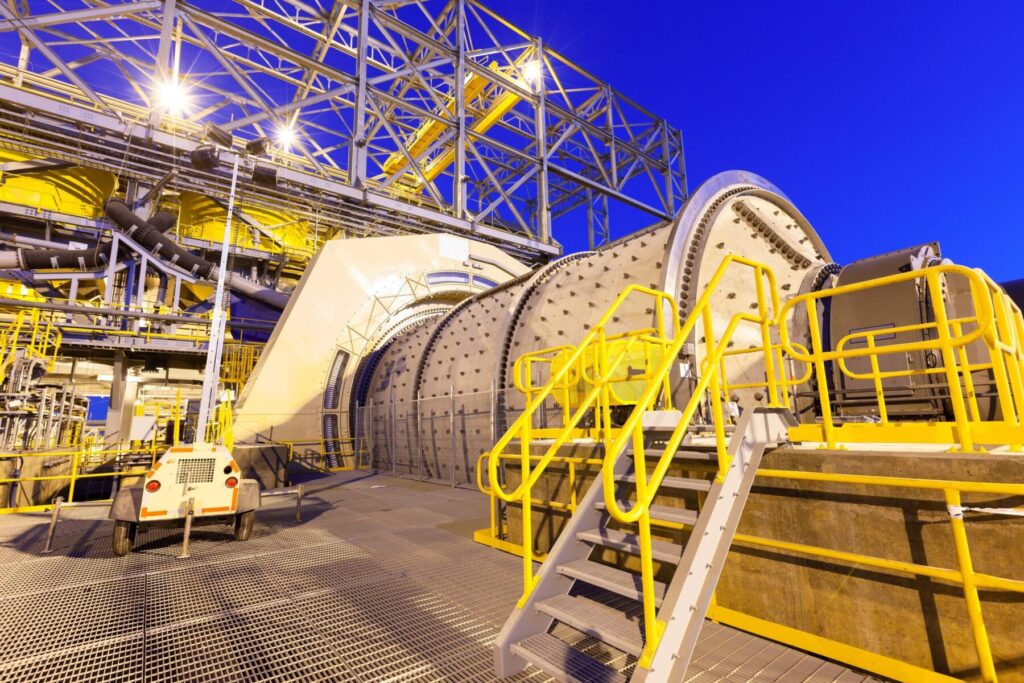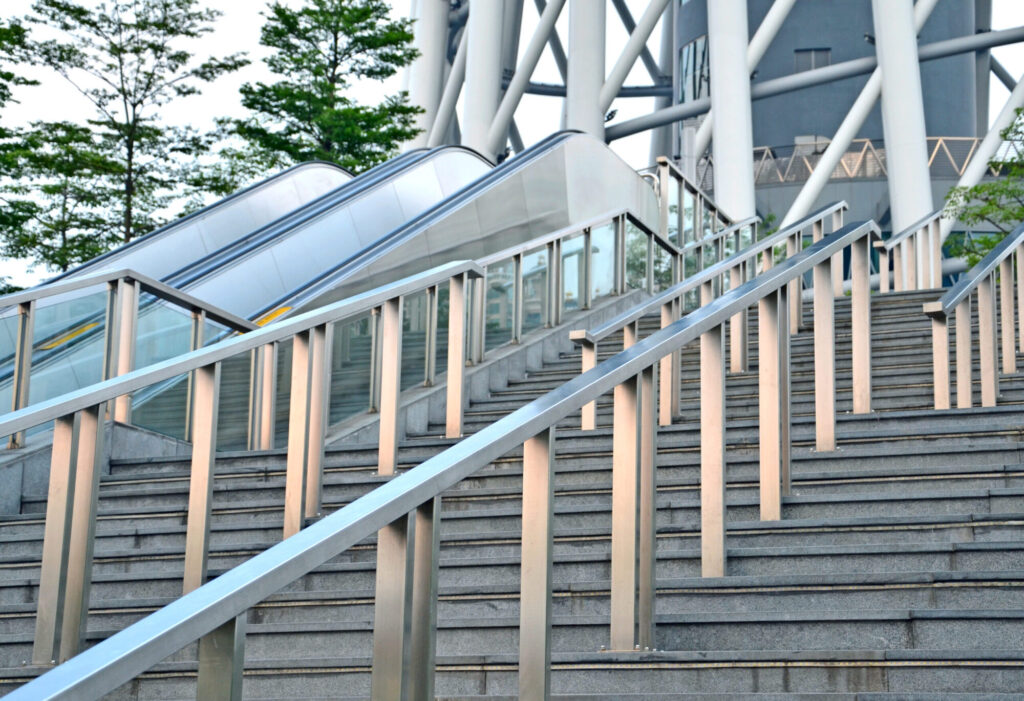Industrial handrails, also known as guardrails, are an essential safety feature in workspaces, particularly in industrial settings and construction sites. A handrail is a horizontal or sloping rail intended for grasping by the hand to provide stability or support. In contrast, guardrails are vertical barriers that protect employees and visitors against falls from elevated surfaces. Industrial handrails serve a similar purpose, providing a secure handhold for individuals to grip while ascending or descending stairs or walking along elevated platforms. These handrails are designed to meet any adopted building codes for the facility and ensure employee safety.
The importance of industrial handrails in industrial settings cannot be overstated. Requires guardrails on any landing that is four feet or more above a lower level, just like with standard general industry requirements. Providing stable railing not only steadies users but also provides a safe and constant anchor while negotiating stairs. Strong and stable guardrails and handrails are essential in industrial settings due to wear and tear, and they play a pivotal role in ensuring workplace safety by offering a stable support system to prevent falls and accidents.
There are various types of industrial handrails, including steel, aluminum, and stainless steel. Steel is a popular material for both stair handrails and railings for commercial egress stairs and industrial staircases. Steel is also a cost-effective option that provides durability and strength. Other materials such as aluminum and stainless steel are corrosion-resistant and low-maintenance. The type of handrail used depends on the specific needs of the workspace. For example, WireCrafters Industrial HandRail is commonly found in shipping areas to keep employees safe around dock height doors. Industrial guardrails can serve many purposes, including commercial guardrail, municipal railing, machine guarding, pedestrian guardrail, stairs and ramp railing. Overall, industrial handrails are crucial safety features that provide stability and support for individuals in industrial settings. They come in various types and materials, but their primary function is to ensure employee safety and prevent accidents.
In conclusion, industrial handrails play a crucial role in ensuring the safety of workers and visitors in industrial settings. They provide support and stability, preventing falls and accidents. The materials used in industrial handrails, such as steel, aluminum, and stainless steel, are durable and can withstand harsh industrial environments. Proper installation and maintenance of industrial handrails are essential to ensure their effectiveness and compliance with safety regulations and standards. Overall, industrial handrails are an essential safety feature that should not be overlooked in any industrial setting.



